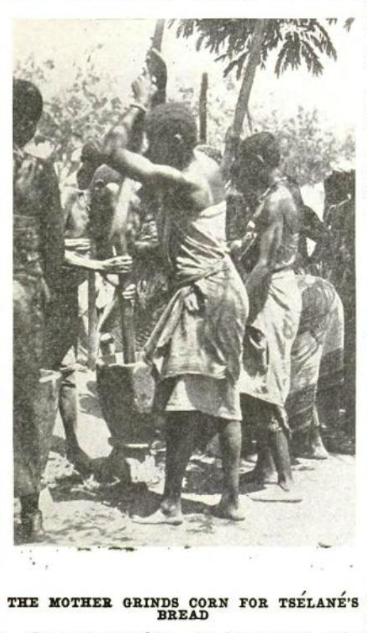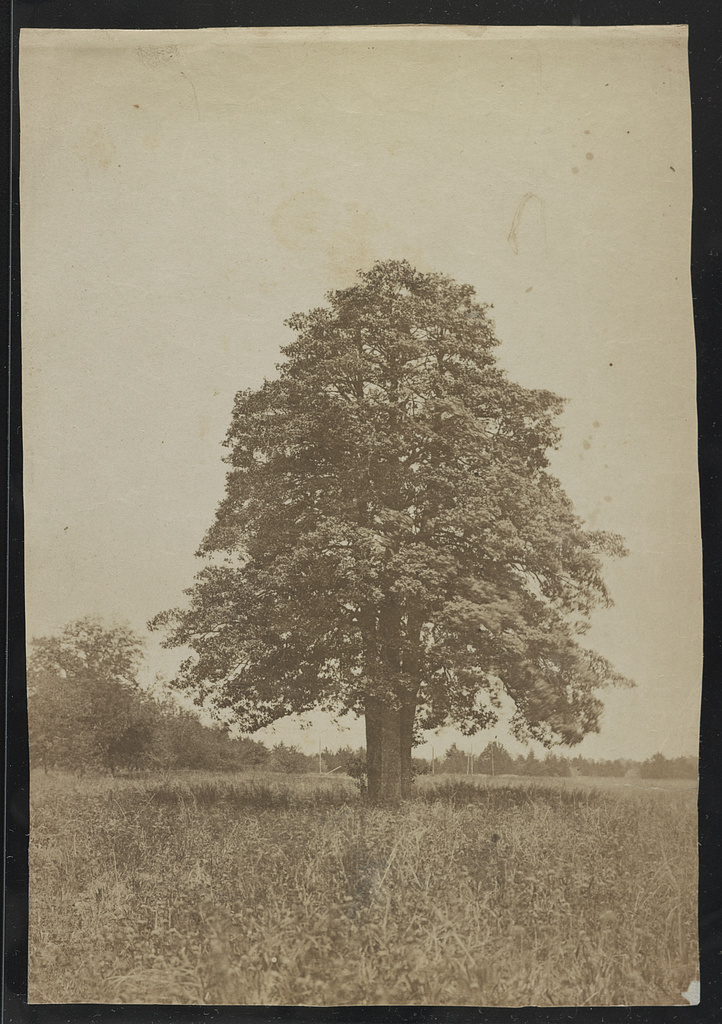A South African Red Riding Hood
By Anonymous
Annotations by Rene Marzuk

(Selected by Monroe N. Work)
Once upon a time there was a Bechuana man who had a daughter named Tsélané.[1] One day he set off with his family and flocks to seek fresh pastures; but his daughter would not go with him. She said to her mother, “I won’t go. Our home is so pretty that I cannot leave it.”
Her mother said, “Since you are naughty you may stay here all alone. But shut the door fast, lest a Marimo (a cannibal) comes and eats you.”
With that the mother went away, but in a few days came back bringing food for the daughter She called “Tsélane, my child, Tsélané, my child, take this bread and eat it.”
“I hear my mother speaking.” said Tsélané, “like a bird coming out of the wood.”
For a long time the mother brought food to Tsélané. Whenever she came she would call, “Tsélané, my child, take this bread and eat it.”
One day Tsélané heard a gruff voice saying, “Tsélané, my child, Tsélané, my child, take this bread and eat it.”
Tsélané laughed and said, “That gruff voice is not my mother’s. Go away, naughty Marimo.”
The Marimo went away. He lit a big fire, took an iron hoe, heated it red hot and swallowed it to clear his voice. Then he came back and again tried to beguile Tsélane. But he could not, because his voice was still rough and harsh.
The Marimo went and heated another hoe and swallowed it red hot. Then he came back and said in a small voice, “Tsélane, my child, Tsélané, my child, take this bread and eat it.”
Tsélané thought it was her mother’s voice and opened the door. The Marimo entered, put her in his sack and carried her off. Soon he felt thirsty and, leaving his bag in the care of some little girls, went to a village to get some beer. The little girls peeped into the bag, saw Tsélané and ran and told her mother, who happened to be near. The mother let her daughter out of the bag and stuffed it, instead, with a dog, a scorpion, a snake, and bits of broken pots and stones.
When the Marimo got home with his bag and opened it, intending to take Tsélané out to cook and eat her, the stones bruised him, the bits of broken pots wounded him, the scorpion stung him, and the dog and snake bit him. In great pain and agony he rushed out and threw himself into a refuse heap and was changed into a tree.
The bees made honey in the bark of this tree. In the spring the young girls gathered the honey and made honey cakes.
This bit of African folk-lore reminds at once of two truths: first, how like the races of men are and how curiously their minds run in the same direction. Second, how peculiar and exquisite is African genius and how different from the ways of other folk. Could one conceive a more original tale than this?

“A SOUTH AFRICAN RED RIDING HOOD.” THE CRISIS 14, NO. 6 (OCTOBER 1917): 287.
[1] The Bechuanaland Protectorate, established in 1885 by the United Kingdom, became the Republic of Bostwana in 1966.
Contexts
Starting in 1912, the October issues of The Crisis, the official magazine of the NAACP, were dedicated to children. A typical edition of these children’s numbers would contain a special editorial piece and two or three literary works specifically for children, while still including the serious pieces about contemporary issues with a focus on race that The Crisis was known for. These October numbers were sprinkled with children’s photographs sent in by the readers.
In his first editorial for the Children’s number in 1912, W. E. B. Du Bois wrote that “there is a sense in which all numbers and all words of a magazine of ideas myst point to the child—to that vast immortality and wide sweep and infinite possibility which the child represents.”
The success of The Crisis’ children’s number led to the standalone The Brownies’ Book, a monthly magazine for African American children that circulated from January 1920 to December 1921 under the editorship of Du Bois, Augustus Granville Dill, and Jessie Fauset.
Definitions from Oxford English Dictionary:
- Bechuana: A member of a black African people inhabiting the country between the Orange and Zambezi rivers in southern Africa, and speaking a Bantu language, Tswana (formerly called Sechuana).
Resources for Further Study
- The University of Southern Mississippi’s The Little Red Riding Hood Project gathers sixteen English versions of the well-known fairy tale that were published between 1729 and 1916.
- The Oxford Bibliographies‘ overview of cannibalism or anthropophagy reveals that the term “cannibal” first came to use in the context of the European colonization of the Americas. The trope of cannibalism followed European imperialistic incursions in Africa and Southeast Asia, wherein, in some cases, accusations of cannibalism justified cruelty and conquest.
- The Morgan State University’s African Folk Tale Library project seeks to gather African “folk tales from both historical sources and contemporary informants in the original language with English translations.”